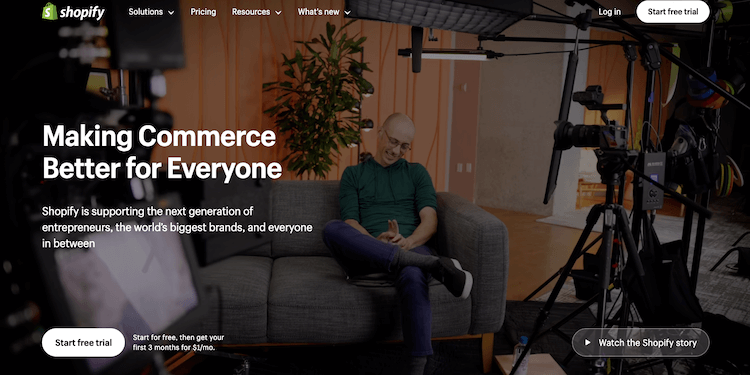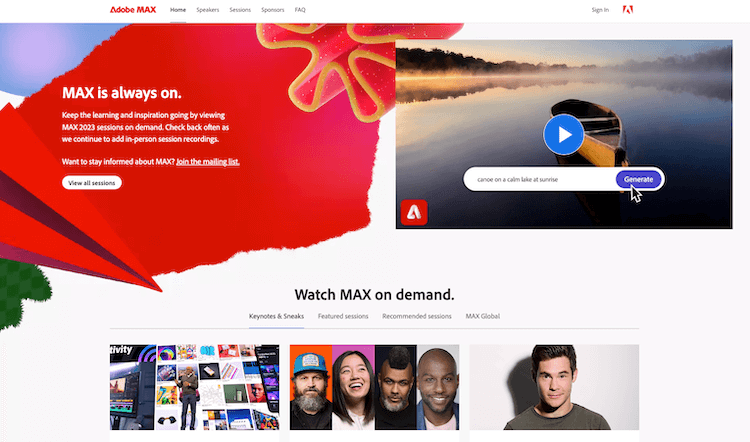
Why Brand Strategy Is Your Best Bet in a World of Commodities

If you ever question the importance of brand strategy, consider why Zoom became a part of our shared vocabulary when we had so many other options for making video calls.
In the midst of the pandemic, it wasn’t just a technology we used; it was something we all did, both for work and to stay connected to family and friends.
Founder Eric Yuan developed the solution in 2011 out of a desire for human connection. He remembered what it was like to be a college student missing his girlfriend who lived ten hours away, and he saw how powerful video meetings could be in building trust during his early career.
Trust, humor and love became brand pillars. Yuan broke conventional corporate norms to introduce features that made the platform more fun, like virtual backgrounds and filters that gave users mustaches or turned them into potatoes.
The company’s mission to "deliver happiness" gave it a higher purpose than just selling technology, and soon it grew from 10 million to 350 million daily users Zooming into weddings, workouts and first dates, in addition to business meetings. A Stanford Business School branding case study describes the company’s use of humor as a “secret weapon.”
From an outside perspective, it looks like Yuan and his company just got lucky, but the branding principles that skyrocketed him to success are just as relevant today. And, in a world where AI is leveling the playing field, enabling ambitious entrepreneurs to singlehandedly develop and promote new solutions, they may be more critical than ever.
Why Is Brand Strategy So Important?
We are living in an era where technology, especially generative AI tools, have eliminated traditional barriers to bringing new ideas to market. If you want to build your own app, you can ask AI to help you write code, create some compelling images and even write and design a working website. You can launch a social media campaign to promote the app and run it on autopilot. This ease of entry into the market means that there's an overwhelming abundance of options for consumers. While anyone can create and market a product, not everyone succeeds in building a brand. A brand is much more than a product or a service; it's the identity, values and experiences that resonate with your audience.
A well-defined brand strategy differentiates your offering in a crowded marketplace. It creates a unique identity and a compelling narrative that goes beyond the features of your product or service. It builds emotional connections with your audience, fostering loyalty and establishing trust. In the age of information overload, where consumers are bombarded with choices, a strong brand cuts through the noise, creates lasting impressions and drives sustainable growth.
While technology has lowered the barriers to entry, it's brand strategy that determines whether a business merely participates in the market or truly thrives in it.
How Do We Define Brand Strategy?
Brand strategy is more than a strong message or an attention-grabbing marketing — although those elements are certainly part of it.
According to the Blake Project, a global brand consulting group, the most important elements of a strong brand strategy are:
- An emotional advantage - A feeling people associate from your brand that they don’t necessarily experience with others
- A distinct advantage - An offering or a way of doing things that is truly different from competitors in the industry
- A connective advantage - A compelling reason why people choose to keep your brand in their lives
When these elements all come together, customers are more likely to pay premium prices for your products and even promote your brand themselves. Each is worth a deeper look and some strong branding examples.
Emotional Connection: The Heart of Brand Strategy
It shouldn’t be surprising that B2B brands are taking a cue from well-loved consumer brands by actively working to make their brands more human and relatable.
That’s because we’re wired to bond with other people on an emotional level. Consider Airbnb’s series of ads showcasing the different categories of rentals with user-generated video. You can almost feel the exhilaration of doing a cannonball from the deck of your lakefront rental.
And in seconds, you can see how easy it is to find your next adventure using the “lakefront” category.
Brands build emotional connections in other ways. Some use humor. Others tap into nostalgia marketing (one of many reasons the Barbie movie and its multimillion-dollar marketing campaigns have been so successful.)
Building a sense of trust is also key. Banking authentication platform Plaid has done this by establishing partnerships with trusted fintech partners and using podcast advertising to tell stories about how it has helped them grow.
The Role of Distinctiveness in Brand Strategy
Every brand strives to stand out — but what actually sets yours apart in the competitive landscape?
Uncovering these differentiators and using them in your messaging is a key part of building your brand identity. It’s not always immediately obvious. You might ask 10 different people within your organization and get 10 different answers. Even if you have a good idea of where you stand within the marketplace, it’s important to test those assumptions with customers.
Are you the most comprehensive option? The most affordable or the easiest to implement? The best choice for a specific industry or company size?
Asking customers what factors ultimately led them to choose you will help you avoid leading with differentiators like ‘our people’ that aren’t as distinct as you think.
Once you have a firm grasp on what really makes your brand distinct, develop a strong value proposition that makes this immediately clear to everyone who interacts with you.
An effective value proposition highlights the unique benefits of your products or services and why they are so valuable.
Shopify’s value proposition is a good example. It positions itself as the best-known platform for eCommerce, not only for small entrepreneurs, but for the world’s biggest brands.

Why a Connective Advantage Amplifies Your Brand
A connective advantage transforms customer interactions into enduring relationships.
The best brands forge connections through shared values, consistent engagement and building a community around the brand. Many buyers today are looking for more than products or services. They want to connect with others who share their goals and can offer advice based on experience.
Both Adobe and Canva have invested heavily in building strong user communities. Adobe hosts an annual creativity conference, local boot camps and educational webinars and courses in addition to showcasing tons of user-generated content on its social media channels.

Canva takes a similar approach with a different audience, making thousands of easy-to-use templates available to everyone, regardless of skill level. The company hosts events for specific types of users, including small business owners, educators and nonprofit marketers.
These brands have established communities that have taken on a life of their own. They’re not just hosting occasional events for the sake of generating leads; they’re creating dedicated places where designers and creative people come to be inspired and learn. Both companies have effectively created millions of brand ambassadors.
Measuring the Impact of a Strong Brand Strategy
You know why brand strategy is important, but how can you quantify the impact? It’s not as simple as looking at the number of people who clicked on an offer or filled out a form.
Measuring the impact of a brand strategy involves analyzing a variety of metrics that collectively paint a picture of brand reach, engagement, and affinity.
Here are a few key metrics to consider:
- Organic traffic, which indicates how many people are finding your brand through unpaid search results
- Time on page, a metric that reflects user engagement and interest in your brand’s content
- Social engagement, including likes, shares, comments, and follower growth, which is one measure of how well your brand resonates with its audience
- Conversion rate, the percentage of visitors who take a next step, such as signing up for a demo or making a purchase, directly measures the effectiveness of your brand strategy in driving business results
- Year-over-year growth in new customers provides insight into the long-term effectiveness of your brand strategy in attracting the target audience
- Customer acquisition cost (CAC), which is crucial for understanding the efficiency of your marketing efforts
- Net Promoter Score (NPS), which measures customer loyalty and satisfaction
Together, these metrics provide a comprehensive view of your brand's performance, influence, and the effectiveness of its strategic initiatives in the marketplace.
How Kuno Can Help Shape and Future-Proof Your Brand Strategy
As a branding agency and full-service digital marketing company, Kuno Creative has nearly 25 years of experience building and promoting brands. Whether you are launching a new go-to-market strategy, entering the next stage of growth, or revising your brand guidelines after a merger or acquisition, our team can help you elevate your brand strategy.
Our brand development process begins with in-depth discovery where we work with key stakeholders and customers, gathering insights and analyzing your competitive landscape. This allows us to craft a compelling brand story and a distinctive visual identity that resonates with your target audience.
Next, we’ll create comprehensive brand guidelines that serve as a roadmap for your team, ensuring you’re communicating your brand consistently across all touchpoints. Brand activation is where the real magic happens as we create a visually appealing website, produce a library of educational content, and create compelling social media posts, ads, videos, and other brand assets.
To better understand the scope and impact of our work, we invite you to explore some of our best branding examples.
If you’re ready to become the next Zoom with an irresistible brand story that stands out in a crowded landscape, we can work together and make it happen.




